Subaru Forester Vs Chevrolet Equinox Comparison: Underdog Fight

Nevermind sensible shoes: we’ve put our entire sensible suits on here.
Managing editor Mike Schlee and I are facing the 2022 Subaru Forester and Chevrolet Equinox. These are two of the most practical options in an eminently practical segment, the compact crossover. They both sold over 150,000 units a piece in the US last year, so they’re common sights on the road. Not the leaders—that’s less than half the number of RAV4s Toyota shifted, for example—but sometimes, you just don’t want what everyone else has, right?
Get a Quote on a New Subaru Forester or Chevrolet EquinoxThat’s why we’re here. Both of these vehicles saw important upgrades for 2022, and we need to determine if that makes them more desirable than the best-sellers. The surprising truth is that it’s much harder to pick a clear victor here than we expected going into the match-up. Whether the Forester or the Equinox is the better pick for you probably depends on where you are when you’re answering.
Interior and Cargo Space
Forester: Not much has changed inside the Forester as part of its 2022 refresh. Not much needed to, either. The center stack has a clear order, with big, easy-to-read climate control buttons right where you want them. The brown-and-black leather of this tester adds a premium feel, even if the dashboard texture detracts. Why has Subaru seemingly modelled this plastic off the wax sheets Ukrainians use for pysanky decoration?
A low beltline and tall roof give the Subaru an airy feeling, with an HD view out ahead making it super-easy to place on the road. The in-door storage is healthy too; necessary for growing families.
Subaru’s seat game is generally good, and the Forester is no exception. The seat base is wide, soft without feeling wallowy, and there’s solid lower lateral support. The center console armrest is almost useless, however.
Rear seat space is good. Headroom is a slightly short 37.6 inches (955 millimeters), but the payoff there is a higher perch for better visibility. The Forester has the wider rear seat, and we’re happy to see Subaru liberally applied the brown leather back here, instead of just saving it for the front. It makes the plastic middle seatbelt loop look even more out of place, though. Legroom is an adult-friendly 39.4 inches (1,001 mm).
Trunk space in the Forester is a rather small-for-the-class 26.9 cubic feet (762 liters). In practice, the Subaru makes the most of that space thanks to a wide, square opening and little intrusion from the wheel arches. Fold the rear seats flat and the space expands to 69.1 cubes (1,957 L). Subaru peppers the sides of the space with hooks for added versatility.
Equinox: If you’ve been in a mainstream Chevy in the last 10 years, the Equinox interior should be familiar. It’s fine, with an inoffensive, swoopy design that you’ll struggle to recollect mere moments after you get out of the car. There are some brittle plastics on the doors, especially the rear set. The wraparound dashboard blending into the door design is a nice touch, however. Red stitching is a not-entirely-justified nod to sportiness, too.
From the driver’s seat, the view out of the Equinox can’t match the wide-screen feel of the Forester. This is especially true when looking over the shoulder, as the chunky C-pillar eats into visibility.
The Equinox begins to claw back points with its front seats. Ingress and egress are both easier here, and once in, the front seats are the more comfortable of this pair. Whoever’s riding shotgun will have to make do with manual adjustments instead of the power options in the Subaru, however.
The rear seats have a pronounced bucket feel to them, yet are just as comfortable as those in the Forester. The seat cushions end quite far from the doors, which feeds into the narrower feel of the Equinox (55.5 inches plays 57.2 inches). Second-row Chevy rides gain an inch in headroom and half of one in legroom compared to the Subaru. In terms of rear-seat space, it’s a wash, then.
The Equinox boasts the larger 29.9 cubic-foot (847 L) stowage space, though the opening is smaller and the wheel wells are larger. You won’t find as many hooks in here, either. Fold the seats down, and the Chevy loses its advantage, with 63.9 cubic feet (1,809 L).
SEE ALSO: Hyundai Tucson Hybrid vs Toyota RAV4 Hybrid Comparison: Fuel-Sipping Family HaulersBottom Line: It’s not often we say this, but of these two cars, the Subaru has the nicer interior. The two-tone setup looks great, and that boxy shape and tall windshield give it the visibility edge. The Chevy’s seats are slightly comfier, but that’s not enough for it to win this category. Round one goes to the Forester.
Tech and Features
Forester: Subaru fits an 8.0-inch touchscreen to this top-trim Forester. It’s the same one that’s occupied the spot since the current Forester launched in 2019, so it’s some way’s off the prettiest or quickest setups out there. That said, it’s easy to navigate thanks to clear icons, and there are redundant physical buttons below. Wired Apple CarPlay and Android Auto are both standard. An additional 6.3-inch screen sits above and back in the dashboard. It handles basic display duties, which can be informational overload at first, but proves handy once you’ve got the hang of it.
As the top trim, the Forester bundles in a lot of creature comforts, including heated seats front and rear, memory seating, dual-zone climate control, Harman Kardon sound system, and four USB ports.
A third digital display sits between the analog dials. This provides the typical drive information, like real-time fuel economy and speed. We appreciate the info on the start-stop system most, however, as it shows a running tally of the amount of fuel saved. Game-ifying fuel savings—why don’t more companies do this?
Subaru’s EyeSight suite of driver assists is standard on the Forester. Automated emergency braking, lane-keep assist, adaptive cruise control, blind-spot detection with lane-change assist, rear cross-traffic alert, reverse automatic braking—it’s a comprehensive lineup. The top trim also includes a driver distraction alert, which we appreciate, even if it’s too eager to beep. No, Forester, I was looking far down the road, stop telling me I’m not paying attention…
Equinox: Like the Forester, the Equinox comes with an 8.0-inch touchscreen embedded in the dashboard, not “floating” like some others. It’s a little higher up, meaning your eyes don’t have to travel as far, nor do your hands. Chevy’s current infotainment system isn’t new either, but it’s super-easy to navigate and still pretty speedy in its responses. New for 2022 is standard wireless Apple CarPlay and Android Auto, which is a cinch to set up the first time, and worked flawlessly the rest of the week.
The Chevy gives up a few niceties found in the Subaru. While both have heated steering wheels, the ongoing chip shortage has claimed the (front-only) seat heaters. The buttons are there, but nothing works. Chevy is crediting buyers 50 bones for this, and says a retroactive fix will come at some point. Oof. You’ll have to move up to the Premier trim for memory seats, too. The Equinox matches the Forester in USB ports (four) and climate control zones (two). Its seven-speaker Bose sound system is two down, but we found no real difference between the setups.
The Chevy’s instrument panel is just as easy to read as the Forester’s. The small info display is useful, though it’s strange that users can’t cycle through the sub-menus; no one right-click to move from settings to home, but five lefts.
Chevrolet includes a reasonable amount of standard safety kit here, with automated emergency braking, front pedestrian braking, lane-keep, auto high-beams, rear cross-traffic alert, and Teen Driver mode all part of the basic package. Adaptive cruise control is part of an optional safety package, but it comes paired with an excellent 360-degree camera. That’s a rarity in the class, and gives the Equinox a leg up.
SEE ALSO: 2020 Ford Escape Hybrid vs 2020 Toyota RAV4 HybridBottom Line: It’s the Equinox that edges ahead here, thanks to a more user-friendly infotainment system, and rare-for-this-class features like a 360-degree camera.
Powertrain, Driving Feel, and Fuel Economy
Forester: Every Forester comes with Subaru’s tried-and-true 2.5-liter boxer-four. With direct injection it produces a perfectly acceptable 182 horsepower with 176 pound-feet of torque. Like every other four-door in the Subaru lineup without a third pedal, the Forester utilizes a continuously variable transmission. It’s a fine pairing for the class. Not quick, but the CVT gives the Forester a good amount of off-the-line urgency, and is able to hush down on the highway.
Even with the standard AWD, the Forester posts competitive fuel economy figures. The EPA quotes it at 26 mpg city, 33 mpg highway, and 29 mpg combined. Canadian figures are 9.0, 7.2, and 8.2 L/100 km, respectively. Our week with the car proved bang-on with those numbers.
Around town, the Forester is a quiet, comfortable drive, swallowing up bumps with minimal fuss. Its boxier shape makes for more wind noise on the highway, but it’s never unreasonable. The steering is light and consistent, making the Forester easy to place on the road.
SEE ALSO: 2022 Subaru Forester Wilderness Review: First DriveWhile we never took either of these vehicles on anything more challenging than a dirt road, we’d trust the Subaru to make it further off tarmac. Its additional ride height and handy X Mode system give it an advantage in the loose stuff.
Equinox: Chevrolet simplified the Equinox drivetrain lineup for 2022. Every model now pairs a 1.5-liter turbocharged four-cylinder to a six-speed auto. Wave goodbye to the more powerful 2.0-liter and its nine-speed transmission. Buyers have the choice of front- or all-wheel drive on all trims.
The Equinox has good around-town oomph, thanks to the abundant 203 lb-ft of torque, which peaks at 2,000 rpm and stays put until twice that many revs. Just 170 horsepower puts it at the bottom of the class however, and that manifests at highway speeds, where the Bow Tie can feel out of breath. While we can’t say we miss the larger engine, the extra three ratios it came with would be welcome, providing closer ratios to improve acceleration.
The nine-speed would also perk up the fuel economy figures. The Equinox posts a 27 mpg average, split between 25 mpg city and 30 mpg highway. (Canadian figures: 8.8, 9.4, and 8.0 L/100 km). That tracks with our testing. Chevrolet allows drivers to disengage the AWD system with a press of a button ahead of the shifter, however. When running in front-drive mode, we consistently scored better fuel economy than the Forester.
The Equinox rides softer than the Forester, with increased levels of body roll. Its steering is super-light, with a vagueness off-center that the Subaru doesn’t exhibit. It’s quiet in town and on the highway, with only large bumps really making their way into the cabin from the cargo area.
Bottom Line: Neither one of these drivetrains wowed us. That’s not really their jobs, either. They move their respective vehicles down the road without fuss. Which is better depends on your situation. If you rarely see snow or unpaved surfaces, the Chevy’s defeatable AWD helps it eke out more range from each drop of fuel. Rural living, where the grip from an extra powered axle is useful? Go with the Subaru.
Styling
Forester: Subaru brought the Forester in for a refresh this year, though you’d be hard-pressed to spot the differences. The headlights adopt a more complicated, angular shape, and there’s a little chrome moustache in the grille. It’s still hard to tell generations of Forester apart.
Counterpoint from Mike, a former Subaru employee: “detractors claim the Forester hasn’t really changed in looks for decades, but there’s good reason. The boxy shape leads to fantastic sightlines and generous passenger space. Not many vehicles of any size I’ve driven that feel more airy than the Forester.”
Equinox: The Equinox also came in for a facelift this year, ditching the dowdy face of yesteryear for something more modern and squinty. It works well enough, though moving around the car, it’s clear that the bones are old. The raked C-pillar and disjointed window line on either side of it is the most obvious tell.
The RS is ostensibly the “sporty” choice, but the monochrome look just ends up making it look low-rent, especially compared to the richness of the Forester’s color scheme.
Bottom Line: As always, looks are subjective.
SEE ALSO: Toyota RAV4 vs Nissan Rogue ComparisonPricing and Value
Forester: The 2022 Forester lineup starts from $26,570 ($31,295 CAD), including destination. That nets buyers the same 2.5-liter boxer-four engine and standard AWD found on our tester, cloth interior, 6.5-inch infotainment screen, two USB ports, and a four-speaker sound system. Moving one trim up opens up a 3-year trial to StarLink, the dashboard-mounted multi-function display (instead of the standard 4.2-inch between the dials).
Our loaded tester is known as the Touring ($36,670) in the US, and Premier ($42,395 CAD) in Canada. Subaru keeps it simple here, with no additional option packs.
Equinox: Despite being front-drive as standard, the 2022 Chevrolet Equinox is slightly pricier than its competitor (at least in the US), ringing in at $26,995 ($28,448 CAD) for the LS model. Adding AWD is a $1,600 ($2,400 CAD) upcharge. The Chevrolet does come with more standard kit, however, including rear-seat USB ports, six speakers, and a 7.0-inch infotainment screen with wireless Apple CarPlay and Android Auto. You do miss out on adaptive cruise control, however, which is standard on all Foresters.
This RS AWD tester represents the penultimate rung on the Equinox ladder. From there, it also includes the RS Leather Package ($1,580 / $1,895 CAD for cow coverings, and the Bose seven-speaker stereo) , Infotainment pack ($895 for upgraded nav-equipped infotainment, 120V outlet, more USB ports) , and Advanced Safety ($650 for heated power mirrors, adaptive cruise control, and 360-degree camera). Canadian buyers can bundle the latter two packs together with the $2,750 CAD RS Plus Package. As equipped, this tester rings in $37,660 ($40,568 CAD).
SEE ALSO: Kia Sorento vs Honda Pilot Comparison: Three-Row ThrowdownBottom Line: The Chevy is less than a grand more than the Forester in the US, and nearly twice that amount less in Canada. Its interior might not look it, but the amount of kit the Chevy comes with makes it a good deal. Not to mention it’s the more likely of the two to find cash on the hood, even in 2022’s bizarre market.
Verdict: Subaru Forester vs Chevrolet Equinox Comparison
Neither of these compact crossovers are the segment leaders. The appeal of both the Subaru Forester and Chevrolet Equinox isn’t wide enough to cover this ruthlessly competitive segment—the lack of alternate, electrified powertrains being the biggest gap in their respective arsenals.
Nonetheless, if you’re looking for something slightly left field from the typical RAV4 or CR-V, and at a more reasonable price, both of these family crossovers have their strengths. The Equinox’s fuss-free tech suite, super-comfy seating, and switchable AWD make it the urbanite choice. On the other hand, the Subaru’s tougher AWD system and practical, boxy shape should serve more rural shoppers, or at least suburb dwellers with a regular cottaging route. Here in the land of six months of snow, we preferred the latter, but the rational side can’t deny the on-paper sense of the Bow Tie.
Become an AutoGuide insider. Get the latest from the automotive world first by subscribing to our newsletter here.

Kyle began his automotive obsession before he even started school, courtesy of a remote control Porsche and various LEGO sets. He later studied advertising and graphic design at Humber College, which led him to writing about cars (both real and digital). He is now a proud member of the Automobile Journalists Association of Canada (AJAC), where he was the Journalist of the Year runner-up for 2021.
More by Kyle Patrick



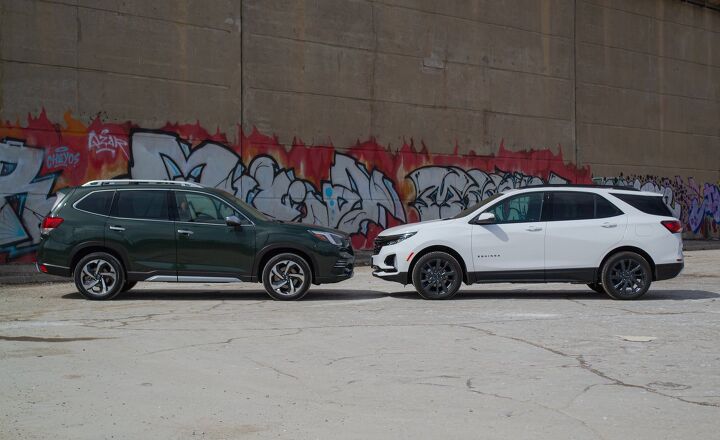


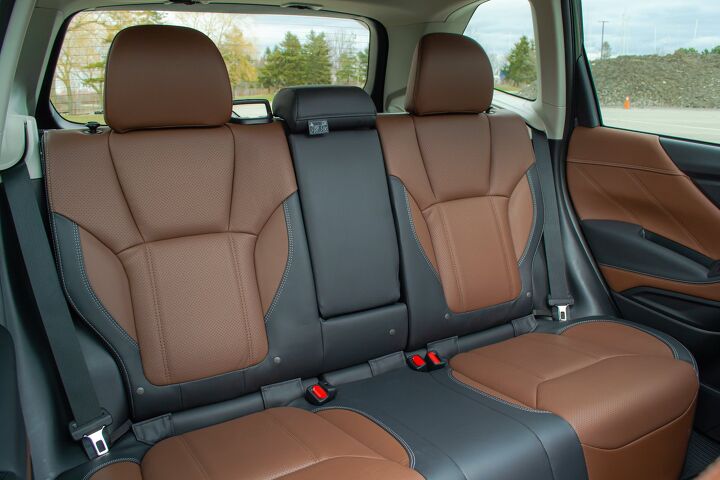
































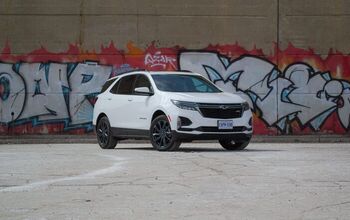

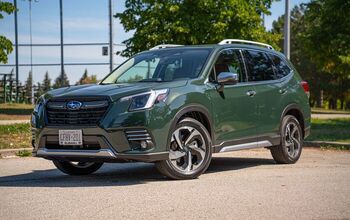

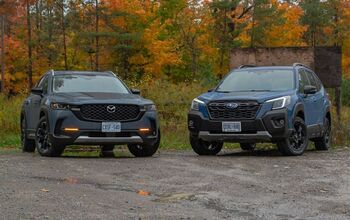
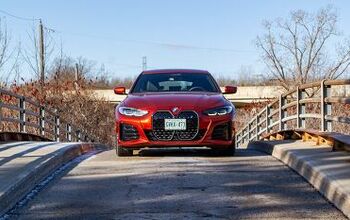
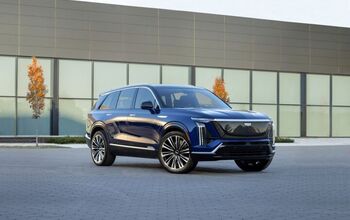

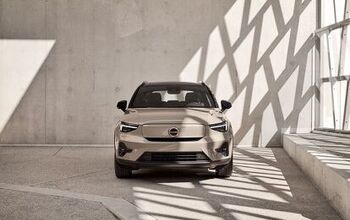

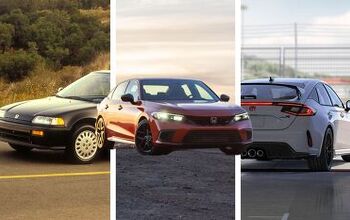
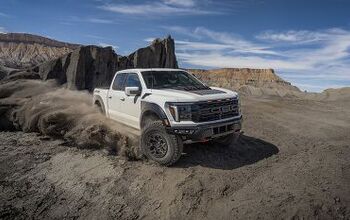



Comments
Join the conversation
We have a 2012 to trade. Also would like the Silver color.
I am looking for a 2018 Chevy Equinox Premiere with 8" Infotainment screen, panoramic sunroof and 2.0 L engine with low mileage (under 50,000 miles). Can you help?